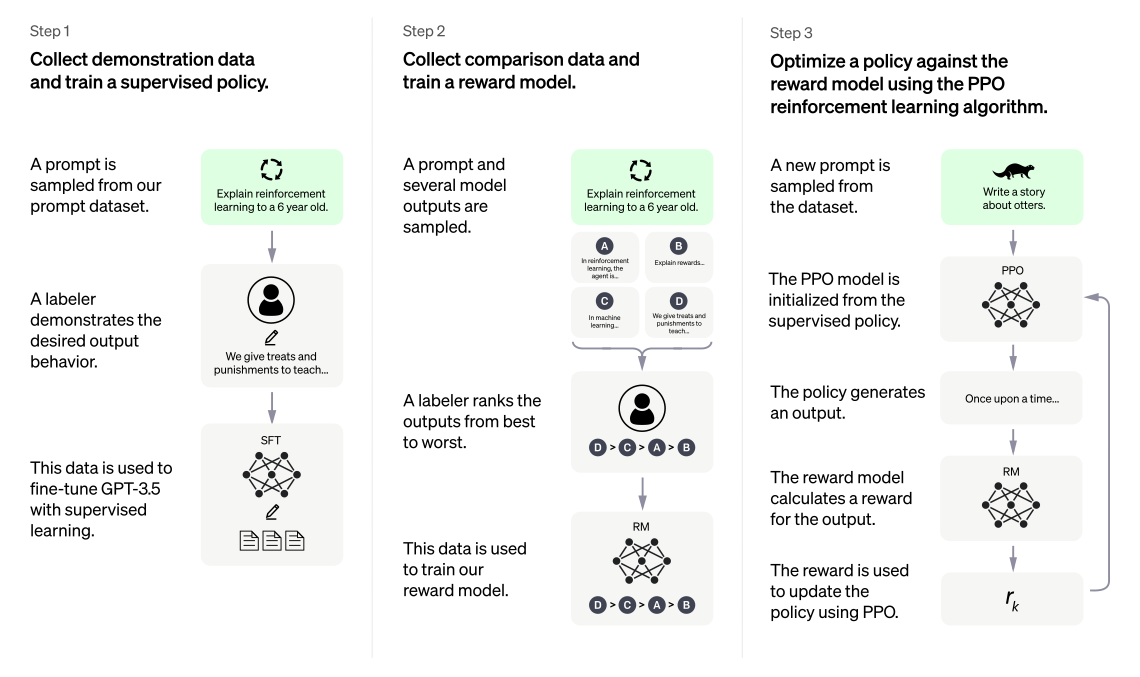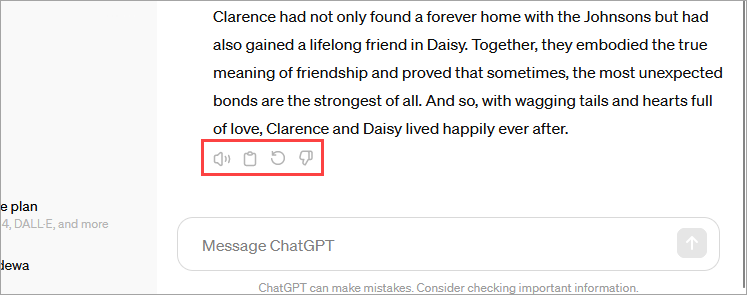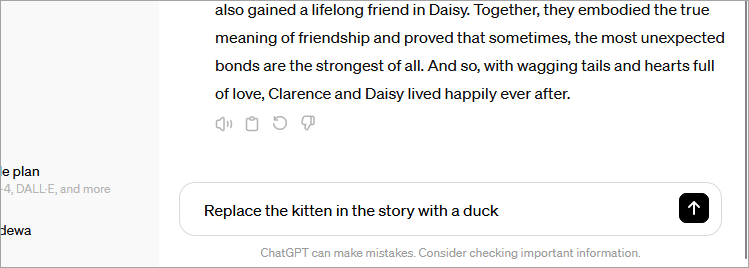
Understanding ChatGPT: Exploring Its Functionality & Mechanisms

Understanding ChatGPT: Exploring Its Functionality & Mechanisms
Quick Links
ChatGPT is far from the only AI chatbot on the block these days, but it might be the most well-known. In a short time, ChatGPT has evolved quite a bit. Here’s where ChatGPT came from, who made it, and how it works.
Who Created ChatGPT?
ChatGPT was created by OpenAI. OpenAI is an artificial intelligence research laboratory that consists of OpenAI Inc, a non-profit, and Open AI Limited Partnership (OpenAI LP), a for-profit subsidiary.
OpenAI created GPT—the first version of what would eventually become ChatGPT—in 2018. GTP-2 and GPT-3 were released in subsequent years, followed by ChatGPT in 2022.
Beyond ChatGPT, OpenAI also created the image generator DALL-E and a video generator called Sora . The overall goal of OpenAI is to develop “friendly AI” that benefits humanity. The founders of OpenAI include Elon Musk, Peter Thiel, Sam Altman, Reid Hoffman, Jessica Livingston, and Ilya Sutskever.
How Does ChatGPT Work?

OpenAI
ChatGPT is an AI model that uses deep learning to generate human-like text based on prompts from users like you. It works by predicting the next word in a given text, based on the patterns it has learned from a massive amount of data during its training process.
The training process is where the “magic” happens. OpenAI feeds ChatGPT with a vast amount of text data. ChatGPT then uses that data to try to predict what the next word should be based on the examples it was given. OpenAI evaluates those predictions and makes adjustments. That process is repeated over and over again many times.
Eventually, ChatGPT reached a point where its predictions were good enough to generate human-like responses. However, it’s important to know ChatGPT is not constantly training. ChatGPT is not up to date on current events. At the time of writing in May 2024, the dataset of ChatGPT 3.5 only goes up to January 2022, and the cut-off is December 2023 for ChatGPT 4.
How to Use ChatGPT
Using ChatGPT is very straightforward. It really is as easy as having a text conversation with a friend. You’ll first need to go to chat.openai.com in a web browser or open the app on your iPhone, iPad , or Android device . You can create an account or use it in a limited capacity without one .
Once you’re in, type a prompt in the text box at the bottom of the screen. You can ask a question or give it a request, like “Write a short story about a dog named Clarence.” Press the arrow icon to submit.

ChatGPT’s response will appear in real-time as if it’s a person typing. When it’s done, you can hear it read aloud, copy to your clipboard, regenerate, or submit it as a bad response.

Each prompt starts a conversation thread. ChatGPT will remember what you’re talking about, so you can enter follow-up prompts or change the subject entirely.

That’s a brief overview of how easy it is to use. Check out our full walkthrough on using ChatGPT for some extra tips . Essentially, treat the conversation like you would with another person. No matter how confident ChatGPT sounds, it can very often be wrong.
Why Is ChatGPT Important?
The big question a lot of people have about ChatGPT is why does it matter? We’ve already seen the huge wave of AI image generators and heard everything from glowing praise to doom and gloom . How does ChatGPT fit into the narrative around AI?
It’s safe to say AI chatbots like ChatGPT will have more of an impact on the average person than AI image generators. Major companies, including Microsoft and Google , are already integrating OpenAI’s technologies (Microsoft Copilot ) or working on their own competitors (Google’s Gemini .) That will have a very real effect on how you interact with the web.
We could be headed toward a world where you can simply ask AI for a recipe for pancakes, and it will create one for you, eliminating the need to visit a recipe blog. But that also comes with misinformation concerns. ChatGPT was trained on text from the internet—notorious for being untrustworthy. What happens when your search engine lies to you ?
In general, there are a lot of questions about ChatGPT that we simply don’t have answers for yet. One thing seems clear at this point: ChatGPT is important, but how important is yet to be seen.
That’s the down low on ChatGPT. It’s an exciting new development in the world of technology and artificial intelligence. Chatbots are not a new idea, but ChatGPT will spur a much more advanced generation of virtual friends . At the moment, it’s mostly fun to play around with , but it could have a much larger impact on our lives in the future.
FAQ
What Does “GPT” Stand for in ChatGPT?
“GPT” stands for “Generative Pre-trained Transformer.” A GPT is a language model that has been trained on a vast dataset of text to generate human-like text. The “Chat” part of “ChatGPT” refers to it being a chatbot.
Does ChatGPT Save Data?
According to OpenAI, ChatGPT does not save data from individual interactions for its own uses. Your input is processed to generate a response, and the data is not stored by OpenAI after the conversation is over. However, each conversation is stored inside your account so you can still find and share your past ChatGPT conversations.
How Long Will ChatGPT Be Free?
ChatGPT is free to use for anyone with an account on OpenAI’s website or limited without an account. As of May 2024, there are no usage limits on the free version of ChatGPT. However, there is a “ChatGPT Plus” subscription plan for $20 per month. It includes reliable availability when demand is high, faster response speeds, and priority access to new features. OpenAI says it will continue to offer free access to ChatGPT.
When Was ChatGPT Released?
ChatGPT was released in November 2022 and had over one million users in just five days. It followed up OpenAI’s original GPT from 2018, GPT-2 in 2019, GPT-3 in 2020, and GPT-4 in 2023.
- Title: Understanding ChatGPT: Exploring Its Functionality & Mechanisms
- Author: Jeffrey
- Created at : 2024-08-26 18:35:28
- Updated at : 2024-08-29 11:36:23
- Link: https://some-knowledge.techidaily.com/understanding-chatgpt-exploring-its-functionality-and-mechanisms/
- License: This work is licensed under CC BY-NC-SA 4.0.